
Did you know that 1 in 7 children have been abused or neglected in the past year? And for every report made related to child abuse or neglect, it is estimated that there are 2 more incidents that go unreported? With four children dying each day in the United States due to child abuse or neglect, and the social-emotional effects of child abuse lasting a lifetime, the stakes are just too high to stay quiet (www.dosomething.org). As educators, we are morally obligated to teach personal safety skills, consent, and body boundaries to our students. And legally obligated to intervene when we suspect child abuse or neglect. After all, we could save a life! For more information and resources on this tough (but critical) topic, please check out this blog post.
If you know me, you know that I love using story books in counseling because they relate to children in a way that nothing else can. They make children feel not-so-alone in their experiences, and are also the perfect starting point for those hard conversations.
Here are 6 of my favorite stories that teach personal safety and child abuse prevention skills (Amazon Affiliate Links):
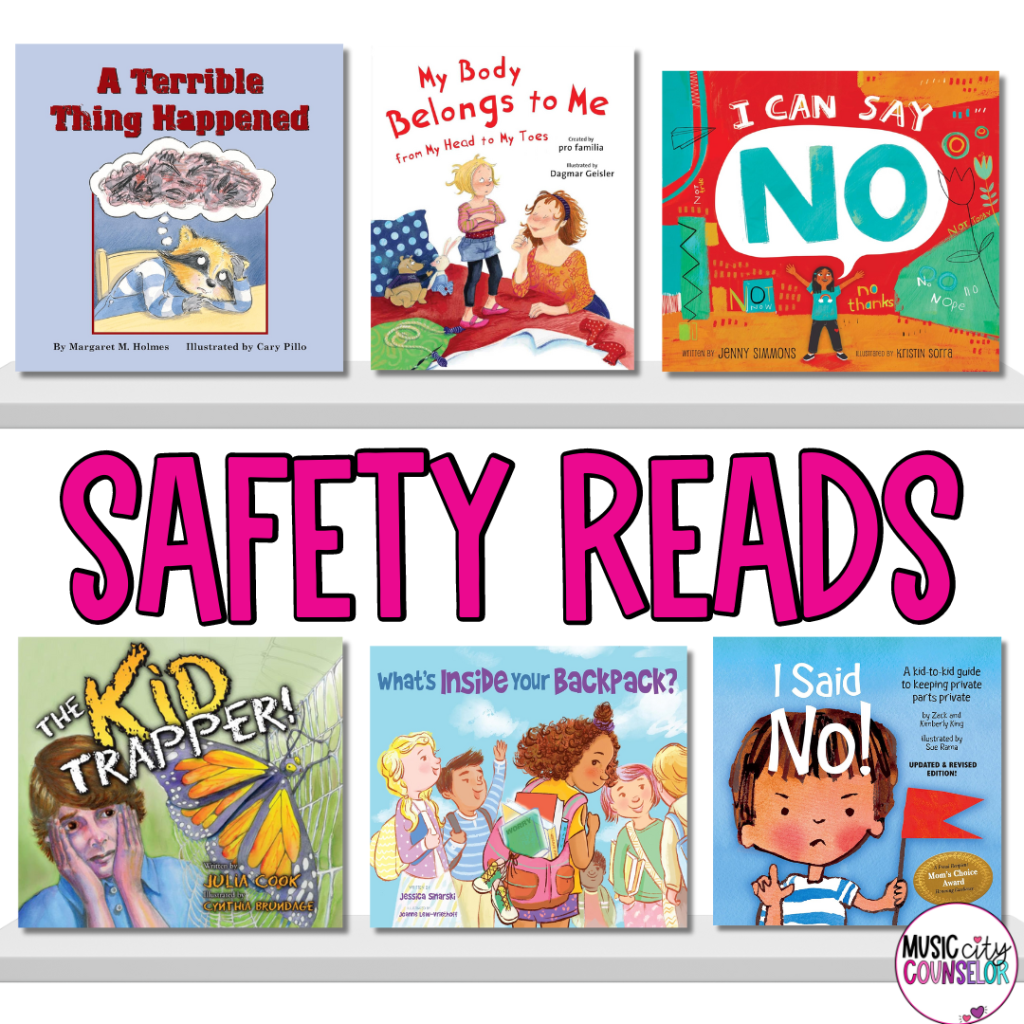
- “A Terrible Thing Happened” by Margaret H. Holmes
- “My Body Belongs to Me” by Pro Familia
- “I Can Say No” by Jenny Simmons
- “The Kid Trapper” by Julia Cook
- “What’s Inside Your Backpack?” by Jessica Sinarski
- “I Said No!” by Kimberly King
Next, I’ll review 3 of my favorites below for you!
“My Body Belongs to Me” by Pro Familia
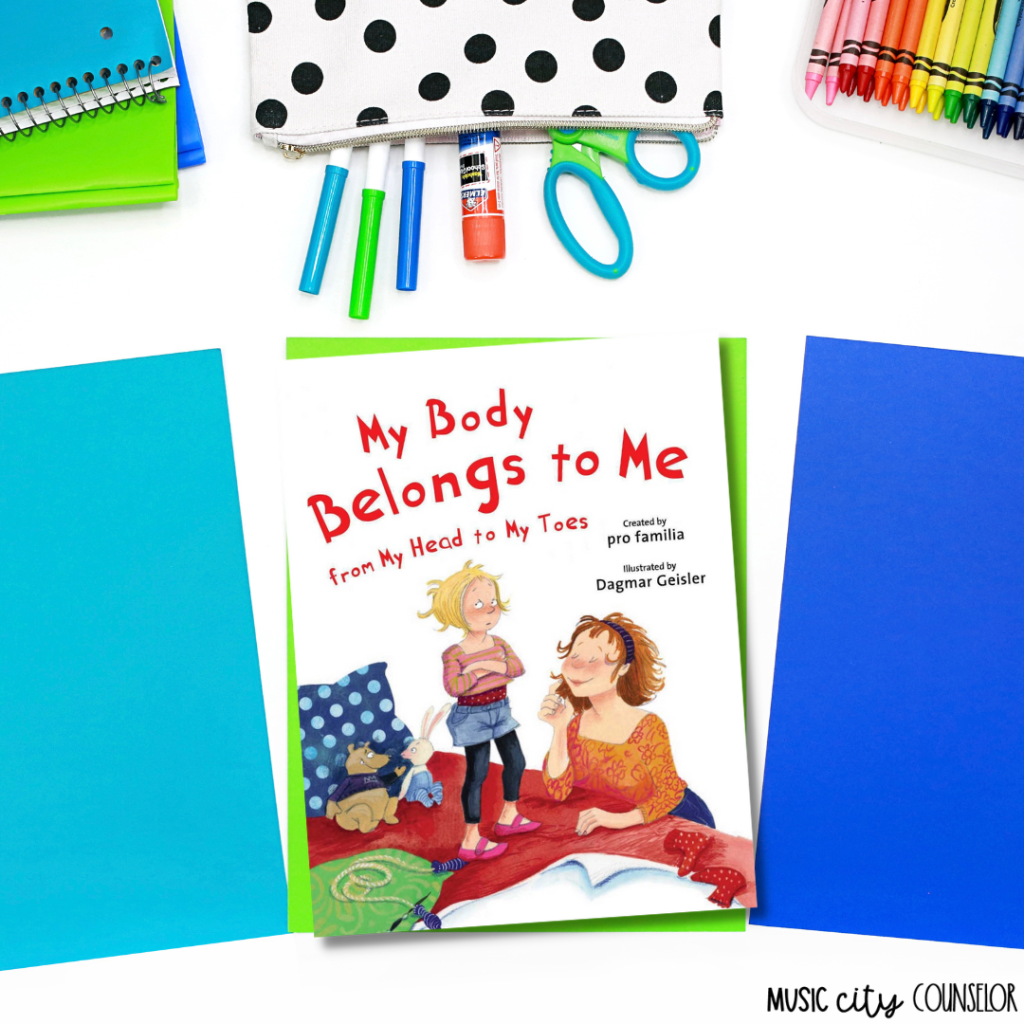
“My Body Belongs to Me” by Pro Familia (Amazon Affiliate Link) is a simple, to-the-point introduction to child abuse prevention and “touching rules” for children. It tells the story of Clara, a little girl who proudly states that her body belongs to her. This means that only Clara gets to decide by whom, how, and where her body is touched. She shares that some touches make her feel happy, safe, and comfortable, such as tickling her friend, sitting in her granny’s lap, and hugs from her papa. But other touches, like wet kisses, or being held too tight, make her feel trapped, icky, or unsafe. When those happen, Clara has the right to say, “Stop, I don’t like that” or “No, please stop.” If she asks someone to stop and they don’t listen, she knows that she needs to tell a grown-up right away.
I appreciate how this story is applicable to all students since it focuses more on the day-to-day touches that happen so often between children and adults. I also like how it encourages students to be assertive and take control of their bodies, and to report any unwanted touches to a grown-up they trust. This book would be a great-read aloud for a classroom lesson and also a good suggestion for parents to add to their home library.
“A Terrible Thing Happened” by Margaret H. Holmes
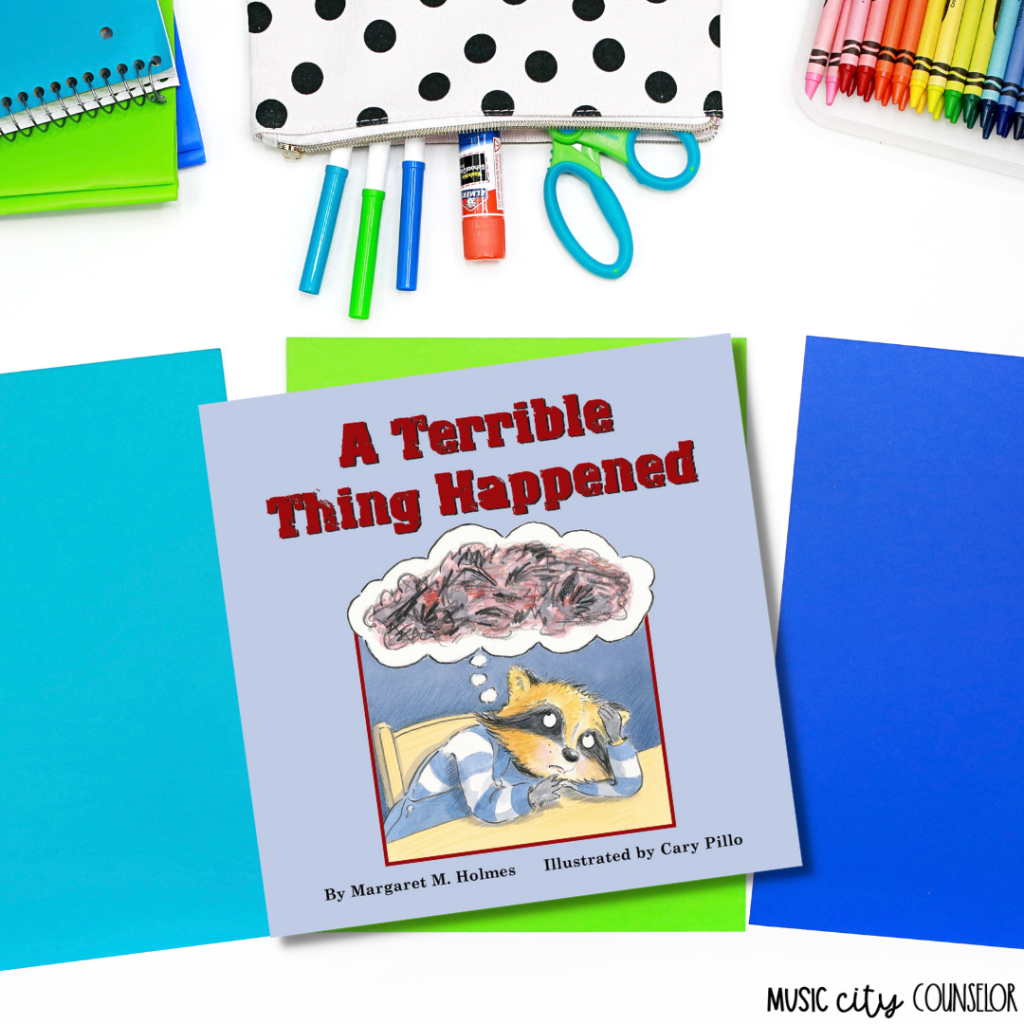
The second story I’d love to share with you is: “A Terrible Thing Happened” by Margaret H. Holmes (Amazon Affiliate Link). A little raccoon named Sherman Smith witnessed the most terrible thing. He tried to forget about it and hide it, but it started to bother him. He felt nervous for (seemingly) no reason, his stomach hurt, and he had bad dreams. He felt angry, which caused him to make bad choices and get into trouble. Until he met Ms. Maple, his counselor, and she helped him talk about the terrible thing. Ms. Maple helped Sherman heal, process his feelings and experiences, and feel much better.
What’s amazing about this story is that the “terrible thing” Sherman experienced is purposely ambiguous so it can apply to ANY trauma a child is going through. The picture shown on the cover of the “terrible thing” is blurred so that the child can interpret it as they please. I love asking them to explain what they see in the image, guess what Sherman’s “terrible thing” might be, and when they’re ready, share theirs. I also appreciate how the story encourages children to follow Sherman’s example and go to a safe, trusted adult for support, guidance, and love. This story is so relatable and gently told, so it is perfect for starting and introducing tough topics and conversations in classroom lessons, small groups, and with individuals. This story would be a great introduction for Child Abuse Prevention lessons and one that you can recommend for parents to use at home, too.
“What’s Inside Your Backpack” by Jessica Sinarski
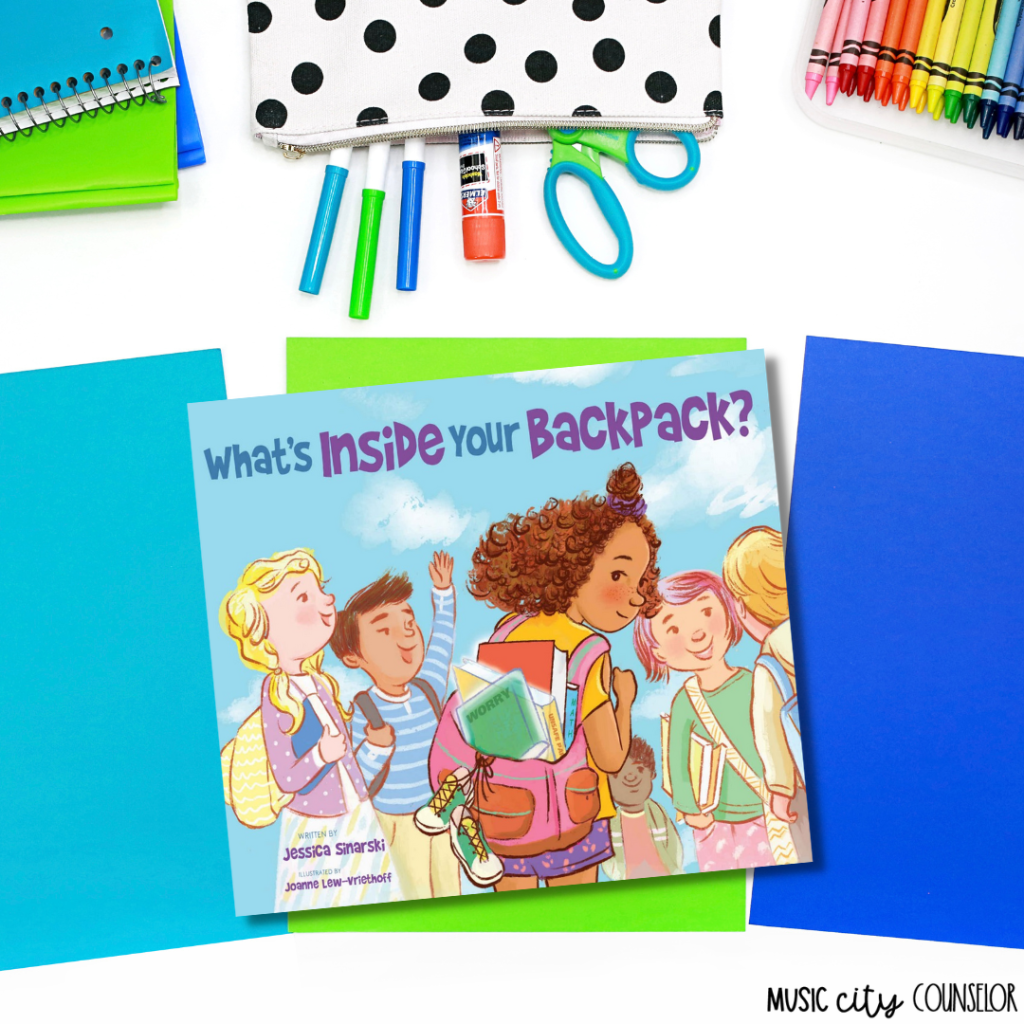
“What’s Inside Your Backpack?” (Amazon Affiliate Link) tells the story of Zoey, a little girl with a lot of heavy “books” in her backpack. These books called “Shame” and “Worry” weigh her down and make her feel fearful, unsure, and tense. The heaviest book of all in her backpack is one called “Unsafe Parent” and is the hardest one for her to talk about. Zoe fears that talking to her school counselor, teacher, or friend about the awful things her dad did may get her in trouble or make her feel even worse. But once Zoe decides to open up to the trusted adults in her life, they each give her special bookmarks with inspirational sayings like, “Breathe in Calm, Breathe out Fear,” and “Imagine with Hope” that help her heal and lighten her load. This story teaches that although our “books” never fully go away, they do make up important parts of our story, and we can learn how to cope with them and find our strength.
This story would be absolutely perfect for any child who has experienced trauma or is going through any heavy personal issues. Every child can understand the feeling of a heavy backpack which makes this metaphor very relatable and straight-forward for kids. I would use this story in individual and small group counseling, and ask students to draw/write about the books in their backpacks. It may even help to fill up a real backpack with heavy books and have each child wear it and relate that feeling to how it may feel to be weighed down with worry, shame, fear, trauma, and doubt. This story would work very well for both classroom lesson and counseling with individuals/small groups of students.
I hope this post provided helpful resources to help you support students. As teachers and counselors, we have the power to help prevent child abuse and to intervene to save a life!
What is one important takeaway you had after reading this post? What are your go-to resources for teaching kids how to navigate tough situations? I’d love to hear from you!
You may also be interested in:
- Child Abuse Prevention Curriculum
- Child Abuse Prevention Resources for Educators
- Counselor Collab Membership

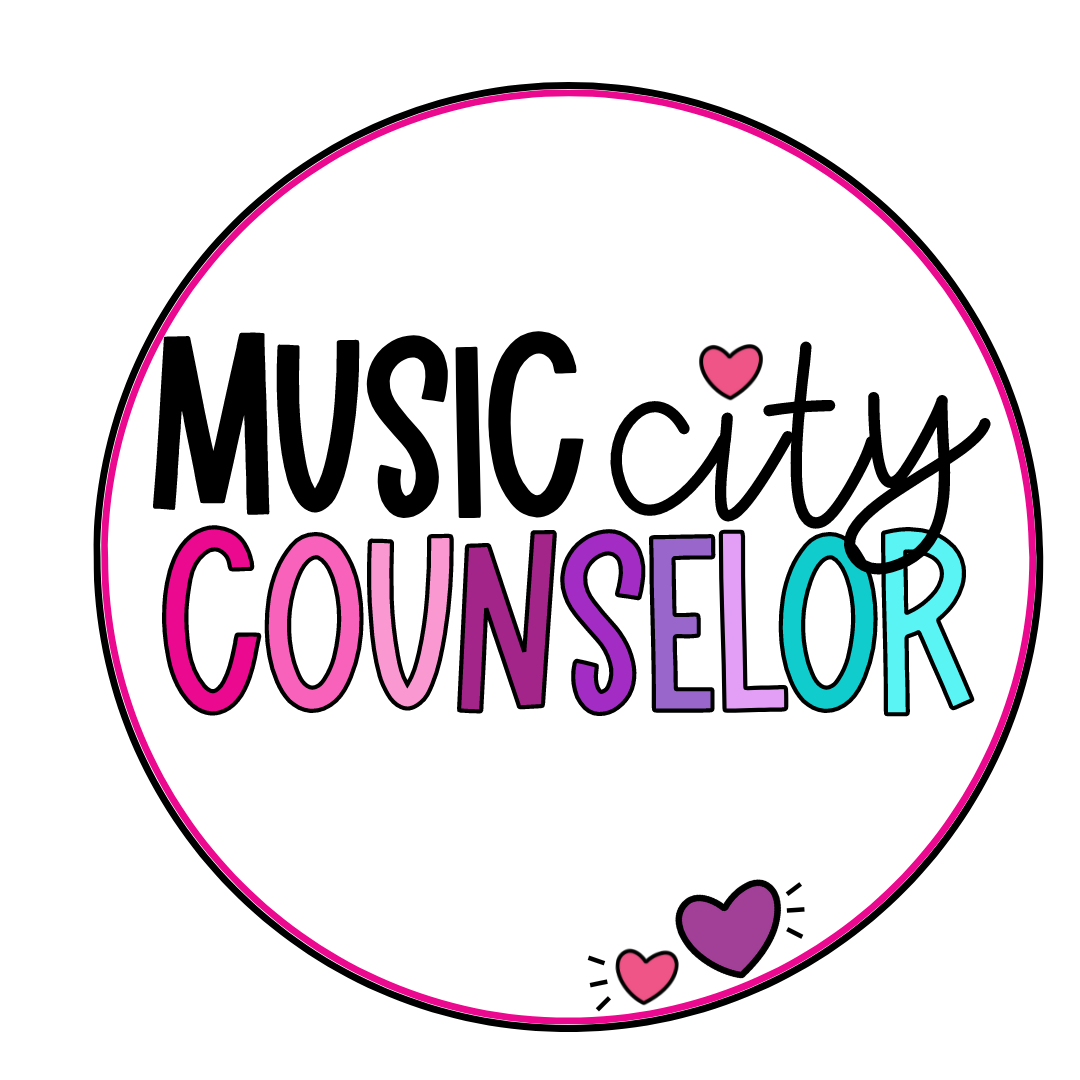

Thank you for these book ideas and feedback. Your expertise is appreciated from this new to counseling School Counselor.
Sincerely,
Angela
Thanks so much for reading and for your kind words, Angela! Happy to help! 🙂
Thanks so much! I appreciate the list of books and your reviews. So many good books and so little money, lol.